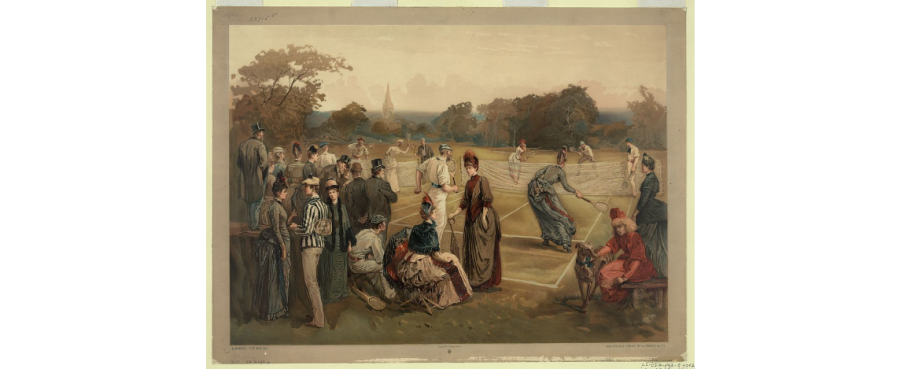At the Arthur Ashe Stadium in New York City, Naomi Osaka took the title of U.S. Open Champion on Sept. 12. Osaka, who is Haitian on her father’s side and Japanese on her mother’s, has faced scrutiny by reporters about her ethnicity and nationality. After all, she is the first Asian tennis player to ever hold the No. 1 ranking in singles, yet her complexion is dark. She speaks English and has lived in the U.S. since she was a toddler, yet she plays tennis for Japan. For each of the seven rounds of the Grand Slam tournament, she wore a mask bearing the names of Black Americans who died as a result of racial injustice or police brutality. She briefly suspended her participation in the Western & Southern Open following the police shooting of Jacob Blake to “get a conversation started in a majority white sport.”And a majority white sport it is. A record 12 black women competed out of the 32 U.S. Open singles competitors this year, but just 10 years ago, Venus Williams was the only black player in the women’s singles draw. On the men’s side, there are even fewer Black players, with only four black men in the 2020 U.S. Open draw. Although players such as Serena and Venus Williams, who respectively won 23 and 7 Grand Slams, have undoubtedly shifted the tennis landscape, the sport has “not always provided the most hospitable environment for black players,” according to an article from the U.S. Open. “Tennis has long been regarded as the ultimate country-club—read: white—sport.”Country clubs, which gained popularity during the 1920s, have often served as a means to establish status and separate its members from larger society. These reasons were largely based on racial discrimination, as most country clubs originally excluded Jewish people, and barriers to African-Americans remained common until the late 20th century. Golf, another country club sport, also has a history of racial exclusivity. In 1990, the Professional Golfers’ Association of America (PGA) selected the Shoal Creek Country Club, southeast of Birmingham, Alabama, to be the site of the PGA Championship. This was met with outrage, as the country club was one of many at the time which had an unwritten rule that Black people could not join as members, and that, “that’s just not done in Birmingham,” as Shoal Creek founder Hall Thompson said.
Although public pressure following this incident forced clubs to do away with discriminatory practices, golf remains a majority white sport. In 2015, American golfers were 80% white and professional golfers were 86% white. Now, Black golfers make up only four of the PGA’s approximately 260 tour regulars.The Masters, another prestigious golf tournament, is a different example of how black people have been excluded from a largely white sport. It’s rare to see a black golfer at the Augusta National Golf Club, where The Masters is played. Augusta, Ga. is in the southeast U.S, which was known for overt racism throughout the 20th century. The Masters only let the first African-American compete in 1975, 11 years after the U.S. passed the Civil Rights Act of 1964. Augusta also had a rule until 1983 stating players’ personal caddies had to be Black. The club finally admitted its first Black member in 1991, 60 years after its formation.Outside the country club, African-Americans were victims of de facto racism in other sports. The National Association of Base Ball Players formed a “gentleman’s agreement” in 1890 which barred Black teams from organized leagues for the next 50 years. Later some Black people could play on traditionally white teams, mainly in the more tolerant North and Midwest, but Jim Crow laws prevented them from making significant inroads. Because of these laws, Black athletes were prevented from competing with white athletes. “Negro” leagues were established for non-white players including African-Americans and Latin-Americans through the 1950s. To this day, the MLB’s Black population is hovering around only 7.7%.The longtime white domination of the American sports world from racist laws and attitudes shows itself in the race makeup of certain sports today. Golf and baseball remain overwhelmingly white, and tennis, while becoming increasingly diverse, is still largely perceived as a majority white sport. Many institutions have enacted rules and started programs in order to increase diversity in their sport. For example, the NFL’s 2003 “Rooney Rule” requires teams to interview one minority candidate for head coaching and upper-level management positions. The percent of games coached by people of color, which remained well under 15% since 1970, rose from 6.3% in 2002 to 27.1% in 2011. NFL coaching diversity has been decreasing since 2017, however, so the NFL expanded the rule to two minority candidates for head coaching openings and at least one minority candidate for any coordinator job in May.
It’s rules and actions such as the Rooney Rule that can help increase diversity in sports. By putting people of color in positions of power, sports can do away with glaring racial discrepancies and problematic “old-boy” models with exclusively rich, white men in charge. Minority athletes can also inspire young people through their success. The increased presence and visibility of players of color can translate into change within the sport itself, and help combat historical underrepresentation. Just look at Naomi Osaka.
How do you think we can combat racial disparities in sports? Let us know in the comments below.






















































































